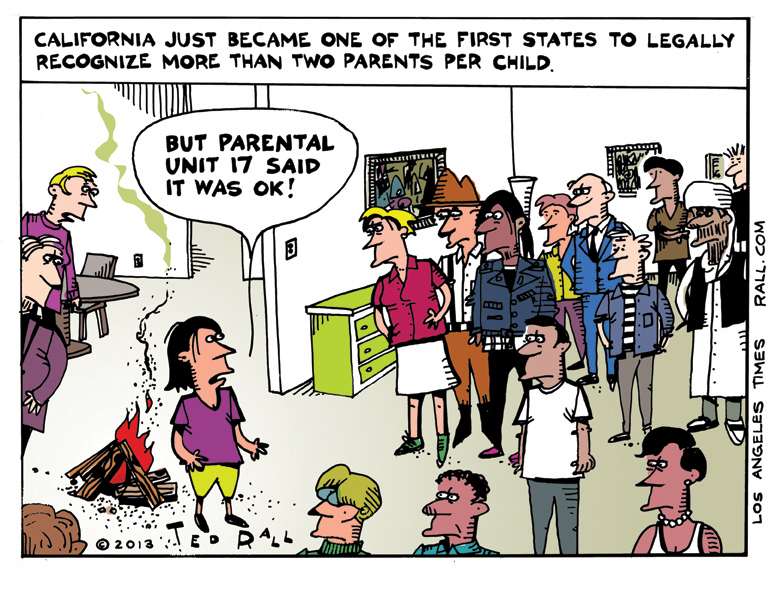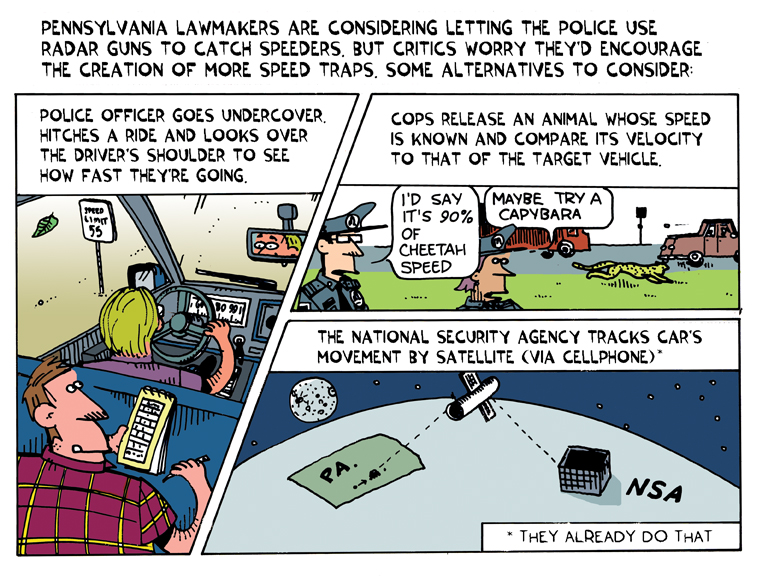This week, we wrap up a personal saga of bureaucratic incompetence and institutional corruption: my attempt to sign up for Obamacare.
The Affordable Care Act officially launched three weeks ago. As one of 50 million uninsured Americans, I’ll pay a tax penalty unless I purchase for-profit insurance from a wildly profitable corporation (the healthcare sector pays its CEOs the highest salaries) via my state’s “health insurance marketplace.”
Alas, my first attempt to shop for a plan ended four hours into the process, when New York’s website crashed and ate most of my info. Two weeks later, I was able to register. But the system couldn’t tell me if I’d qualify for a subsidy, or whether any of the plans cover my doctor or local hospital.
As the leaves pile up and I head out to buy a last-minute discount pumpkin just in time for Halloween, will the system work — the one that was supposed to launch three weeks ago? Let’s find out.
Fortunately for President Obama, his Republican rivals were so busy committing electoral suicide by shutting down and pushing the federal government to the brink of default that no one noticed his lame excuses — “we expected glitches” — for his incredibly shitty websites.
“These are not glitches,” an insurance executive told Forbes. “The extent of the problems is pretty enormous.”
Hey, it’s not like they had three years to get ready.
Now Obama says: “I am the first to acknowledge that the website that was supposed to do this all in a seamless way has had way more glitches than I think are acceptable and we’ve got people working around the clock to do that.” Which is totally true, if by “first to acknowledge,” Obama means “fifty millionth to acknowledge after stonewalling and refusing to admit anything’s wrong.”
OK, so the president is a liar. But then he says “people” are “working around the clock” to make things work “in a seamless way.” Which inspires me with confidence. After all, I’m a person. “People” are members of my own same species. We’re on the same team!
I’ll admit, though, I’m not exactly Hoping for a big bucket of Change.
Like Mulder, I want to believe. The problem is, two days ago, The Newspaper of Record printed an article that, among other things, says:
“Most of the 15 exchanges run by states and the District of Columbia do not have provider directories or search tools on their Web sites — at least not yet — so customers cannot easily check which doctors and hospitals are included in a particular plan’s network. Most allow customers to search for providers by linking to the insurers’ Web sites, but the information is not always accurate or easy to navigate, health care experts say.”
Well, let’s see for ourselves, shall we?
Log in: no problem.
Take that, Tea Party Patriots!
The last time I slogged through this process, I wasn’t able to find out whether I’d qualify for a subsidy. So I’m on tenterhooks. Am I poor enough, have enough newspapers canceled me, slashed my fee and/or kept me at the same rate for years as inflation ate away my standard of living to score a break on Obama’s for-profit healthcare mandate?
I click the tab marked “financial assistance.” Fortunately, all the information I spent hours typing in a week and a half ago is still there. Inexplicably, however, I have to scroll through each page, individually re-approving them. There are 28 of them in all. Terrible design. What is this, iOS7?
The little wheel turns. And turns. Is it working? Yes! I get a message:
“You and your family cannot pick a health plan right now. You will get a letter or an email telling you when to log onto your Marketplace account to pick a health plan. Call 1-855-355-5777 to find out how to pick your plan if the Marketplace has not contacted you by the middle of December 2013.”
Thus endeth my adventure with the Great Privatized Healthcare Marketplace Experiment of 2013. Which, apparently, will soon become the Great Privatized Healthcare Marketplace Experiment of 2014. Or 2015. Whichever comes last. Or ever.
Which really sucks.
It sucks for two reasons:
First, like 50 million other Americans, I really do need insurance. Like most cartoonists and writers, I work for a syndicate that considers me an “independent contractor” for tax purposes. So even though I work 80 hours a week, I get zero coverage. I feel healthy, but you never know. Swine flu nearly killed me a few years back. Also, I drive too fast.
My experience isn’t unique. How many Americans won’t be able to buy health insurance between now and December, or whenever Obama finally gets his act together? How many will die due to lack of insurance? (The back of the envelope guesstimate: about 3800 per month.) How many will go broke paying for-profit doctors and hospitals?
Second, Obamacare is a Catch-22.
Bloomberg wire service reports: “The Patient Protection and Affordable Care Act of 2010 requires most Americans have an active health insurance policy by March 31 or pay the higher of one percent of their annual income or $95.”
As the not-typically-quotable John Boehner asked recently: “How can we tax people for not buying a product from a website that doesn’t work?”
To which New York’s healthcare marketplace exchange thingamabob gives an elegant answer: “Error 500: org.opensaml.common.SAMLRuntimeException: Error determining metadata contracts.”
(Ted Rall’s website is tedrall.com. Go there to join the Ted Rall Subscription Service and receive all of Ted’s cartoons and columns by email.)
COPYRIGHT 2013 TED RALL



